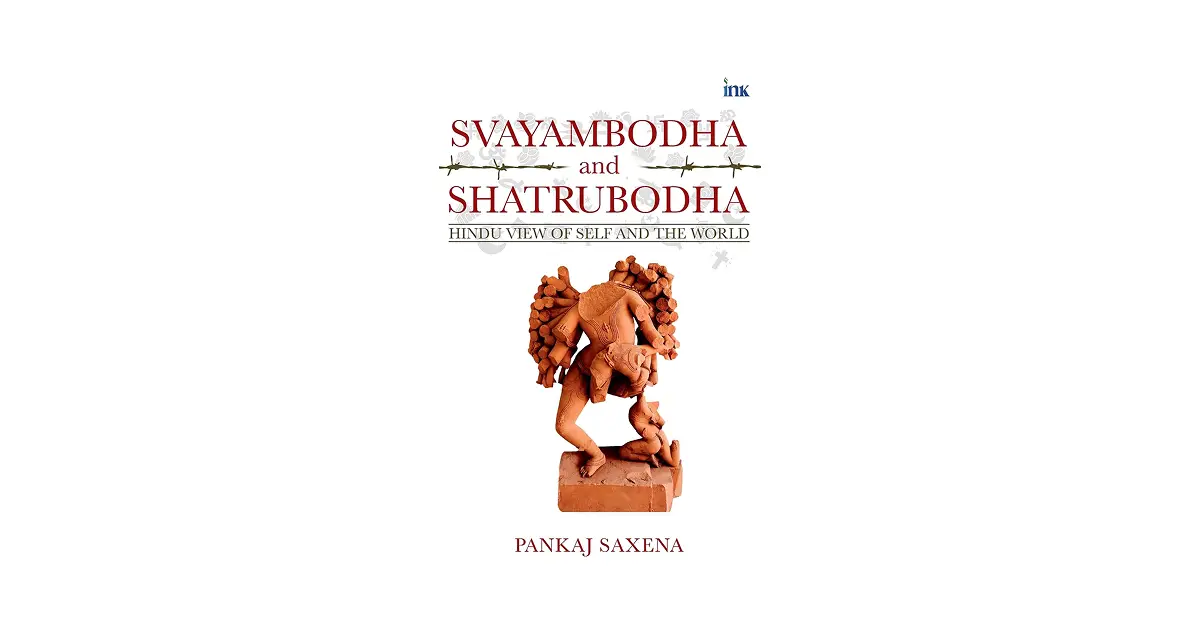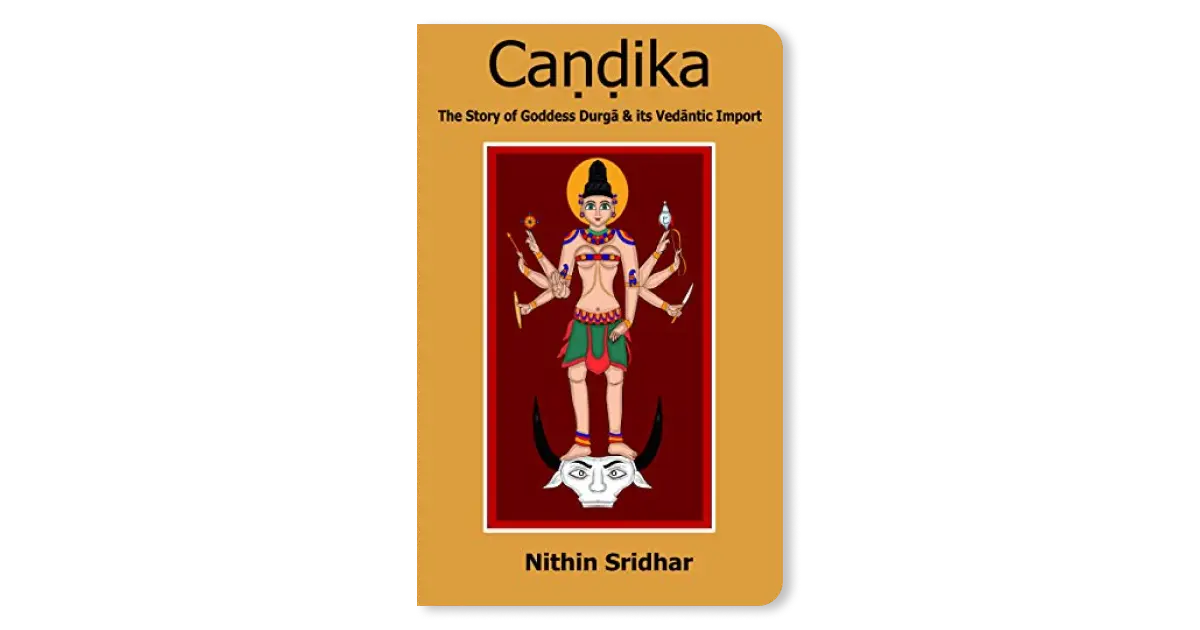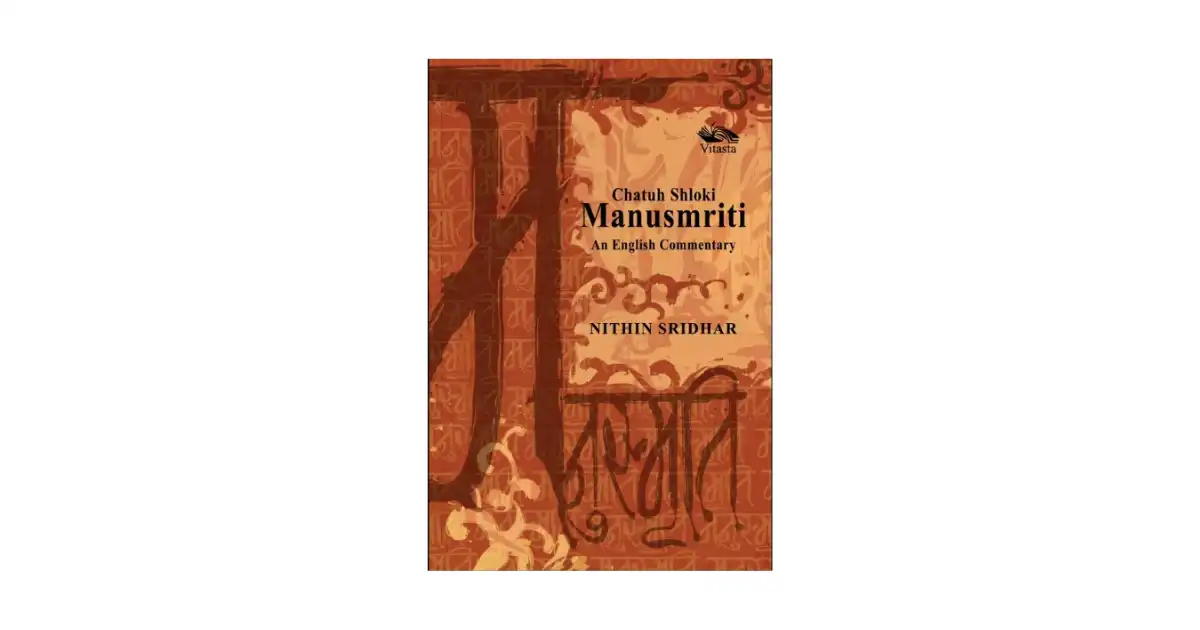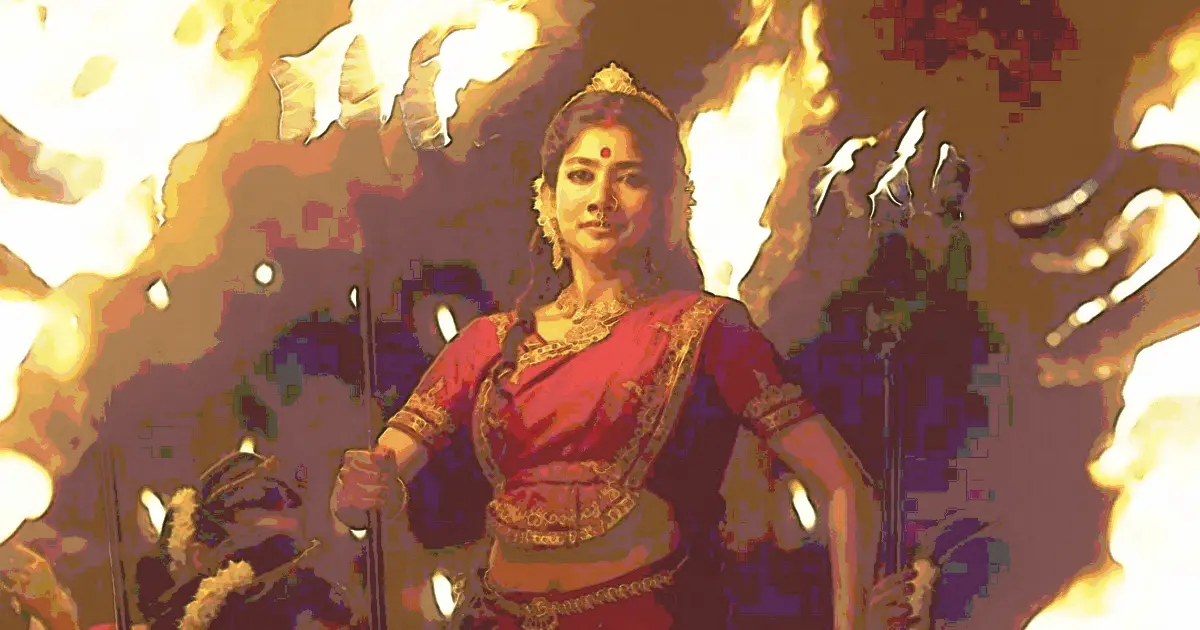To encounter Muthusvāmi Dīkṣitar is to enter a world in which India’s knowledge traditions— not only saṅgīta śāstra but also mantra, advaita, cosmology, jyotiṣa, Veda, āyurveda, temple traditions, sacred geography, Śilpa śāstra and every other one of its elements — meld into each other to create a transcendental musical experience whose depth is nonpareil. Dīkṣitar draws from almost every knowledge system, exhibiting a mastery of each one, unbothered about the artificial partitions between them. Anubhti: Experiencing Muthusvami Dikshitar, published by Garuda Prakashan, invites the reader to explore this integrated civilizational space occupied by an exalted musician-cum-composer par excellence. By recounting the life and work of Muthusvāmi Dīkṣitar — a veritable saint shaped by Śrīvidyā sādhana, bhakti, yoga, etc. — he emerges as an exemplar of India’s geocultural consciousness—a thinker whose oeuvre gestures toward a sacred, interconnected India long before the advent of the modern construct of the nation-state.
Through this review, the manner in which this book spurs the reimagining of Dīkṣitar as a civilizational icon whose body of work embodies the totality of the Indic intellectual tradition shall be made clear. His compositions are not merely art or culture; they are microcosms of India’s enduring unity. Anubhuti offers a glimpse of an integrated world of the not-so-ancient past, reminding us why Dīkṣitar’s music continues to resonate so deeply as a map of India’s cultural memory and a testament to its unbroken civilizational rhythm.
First, a note about the author. Dr. Kanniks Kannikeswaran is a renowned musician/composer and music educator. He is a lifelong connoisseur of Dīkṣitar who has published this work in order to commemorate Dīkṣitar’s 250th year. In his preface, titled “Why the world needs to know Dikshitar”, he makes the case that the vāggeyakāra is under-appreciated and under-explored, setting the stage for the contents of the book itself, which explores all the aspects of Dikshitar’s life and music. The book’s cover features the six-point Śaṭkoṇa yantra of Murugan, which visually encodes the six forces that shaped Muthusvāmi Dīkṣitar’s musical and spiritual life. It maps the six geographic centers pivotal to his life—Benares and the five Tamil hubs of Manali, Kanchipuram, Tiruvarur, Thanjavur, and Ettayapuram—onto six cultural lineages that informed his repertoire: the Veṅkaṭamakhi tradition, colonial melodies, the dhrupad aesthetic, Vedānta, Śrīvidyā Tantra, and the Tēvāram temple idiom. These correspond, in turn, to the Śaṇmata framework—the six modes of worship through which the nirguṇa brahman is approached in saguṇa form. The interplay of these six geographies, six worship traditions, and six cultural influences constitutes the book’s central analytical framework.
This book, divided into three parts, commences with a prologue, containing a biographical account of the author’s discovery of Dīkṣitar’s music, and thus the conception of the book to describe the experience or anubhūti of his music. The book is an exhaustive exploration of depth and wonder that is Dīkṣitar’s life and work, woven with its profound connection with the sacrality of the puṇyabhūmi Bhārata. The book is made especially engaging by the way the author interweaves personal experience with scholarly analysis. Dr. Kannikeswaran’s ideas unfold through anecdotes, epiphanies, and memories drawn from a lifetime of practice—as a musician, connoisseur, and lifelong student of the art. This autobiographical texture lends the work both intimacy and interpretive depth, allowing readers unfamiliar with Karṇāṭaka saṅgīta to enter Dīkṣitar’s world through lived experience rather than abstraction.
The structure of Anubhuti itself reflects the multidimensionality of Dīkṣitar’s life and legacy. The introduction offers a lucid overview of the Karṇāṭaka tradition, which makes it easy for even the uninitiated to understand the terms and concepts needed to appreciate the nuances of the art. By attempting to recount the listening experience, the evocation of rasa (specific emotions) and the manner in which to appreciate various aspects of Karṇāṭaka saṅgīta, he situates Dīkṣitar’s oeuvre within its broader intellectual and aesthetic milieu. This is followed by a biographical section that traces his movements across six key geographic hubs—from Benares to the Tamil heartlands—mapping how place, pilgrimage, and kṣetra shaped Dīkṣitar’s musical imagination. In this section, Dr. Kannikeswaran takes us through a meticulous and detailed biographical account of the life of Muthusvāmi Dīkṣitar. Some of the key aspects covered are: his gurus and their impact on his work and life, his family, ancestry and home, his father’s compositions and their influence, his strong foundations in Vedic and śāstric study, and his uncanny ability to digest every śāstra and develop a unique style of his own. Importantly, a contemporaneous account of the historical context and tumult (complete with an account of his patrons, etc. ) sets the backdrop and helps draw a complete picture of his life at the time. These details become especially fascinating in his discussion of Dīkṣitar’s unique Noṭṭusvaras later on in the book.
Anubhuti also highlights the profound significance of the Saṅgīta Sampradāya Pradarśinī, a frequently referenced text. Compiled over a century ago, it represents a landmark achievement: the first systematic attempt to notate an oral musical tradition with precision, ensuring that Dīkṣitar’s compositions—and the tradition surrounding them—could endure as an authoritative reference for future generations. The third section of the book, framed through the lens of Indian Knowledge Systems, distills the lessons of Dīkṣitar’s life and art for the present, presenting him as a polymath and an innovator whose work resonates far beyond the confines of performative practice. Samashti extends this argument, positioning Dīkṣitar—grounded in Saṃskṛta, temple culture, śāstra, and even the absorption of colonial tunes—as a musical figure with a potentially pan-Indian appeal, transcending boundaries yet remaining firmly rooted in śāstra and Upaniṣadic thought.
What is remarkable about the book is the manner in which Tamil history, words/ideas, shrines, iconography and devotional literature are linked to the richly referential compositions of Dīkṣitar. Dr. Kannikeswaran also describes the prosodical and literary devices with which Dīkṣitar’s music is ornamented — alaṅkāras such as the yati (rhythmic pauses and structural patterns — like the gopucchā yati and the śrotovahā yati), prāsam (concordance of the second syllable across verses), alliteration, svarākṣaras (syllables corresponding to the musical note or svara) — which all add layers and layers of depth, synergy and aesthetic appeal to the compositions. The use of these poetic alaṅkāras like svarākṣaras highlights Dīkṣitar’s mastery of both language, śāstra and music, seamlessly braiding lyrics and melody. The genius of Dīkṣitar runs in his family — his father, Rāmasvāmī Dīkṣitar, is credited with composing a varṇam 'Sarigadani’, using only svarākṣaras. Dr. Kannikeswaran also reflects on Dīkṣitar’s mudrā — Guruguha (an ode to Murugan) — which is cleverly and beautifully inserted in different compositions and contexts in different ways to reflect various meanings.
One of the most wonderful episodes recounted in Anubhuti is the account of Muthusvāmi Dīkṣitar’s departure from Varanasi—a moment that has immortalised his interaction with the city. After five years of tapas and instruction under his guru, Cidambaranātha Yogī reminded Dīkṣitar of the true nature of Devī Annapūrṇī of Kashi, as not merely the provider of material sustenance, but the granter of mokṣa. With his sādhana complete, the Yogi instructed Dīkṣitar to return to his family, and, in a final ritual act, asked him to step into the waters of the Gaṅgā with outstretched arms. What followed is preserved in the oral histories of the Dīkṣitar family and his lineage of disciples. A vīṇā—embossed with the Rāma nāma—is said to have manifested miraculously into Dīkṣitar’s outstretched hands. The Yogī identified it as prasāda from the Gaṅgā, a parting gift from the river that had witnessed the disciple’s transformation. Soon after uttering these words, he breathed his last on the riverbank.
Deeply moved and shaped by his grounding in Śrīvidyā Tantra, Dīkṣitar built a memorial for his guru at Hanuman Ghat. There, he installed a Śiva Liṅga engraved with a Śrīcakra. This is the site of the Cakraliṅgeśvara temple (see note 1) in Varanasi, still visited today, especially by devotees from the South. Carrying the miraculous vīṇā, Dīkṣitar then left Kashi for Manali, but the city never left him; it remained a sacred axis symbolic of his musical and spiritual transformation.
Another similar episode from Muthusvāmi Dīkṣitar’s life is his transformative experience at Tiruttani. In his mid-twenties, the young musician undertook the arduous trek up the hill-temple of Murugan at Tiruttani and remained there in meditation for forty days. At the end of this period of austerity, an elderly man is said to have appeared before him and placed a piece of sugar candy into his mouth. Subbarāma Dīkṣitar (Muthusvāmi’s grand-nephew and biographer) identified him as Cengalvarāyā—Murugan himself. It was in the wake of this encounter that Dīkṣitar burst into his first composition, Śrī Nāthādi Guruguho Jayati in the rāga Māyāmālavagaula.
Episodes such as this—recorded within the tradition and embedded in its collective memory—are central to understanding Dīkṣitar’s stature, situating him within the saintly lineage of South Indian music, where tapas, vision, and divine encounter are inseparable from artistic genius. Some contemporary musicians speak of Tyāgarāja, Śyāma Śāstri, and even Dīkṣitar as if they were secular prodigies—musicians whose brilliance lay in abstract compositional and poetic skill rather than the ritual, religious and traditional ethos that nurtured them. Such readings do a disservice to the tradition, divorcing its music from its metaphysics, its temples, and its living practices of worship.
A major strength of Anubhuti lies in how it foregrounds the sheer breadth of Dīkṣitar’s musical and textual vision. For a Karṇāṭaka saṅgīta enthusiast, the book’s revelations about both well-known and lesser-known kṛtis—exploring their hidden contexts, iconographies, and textual subtleties—allow even familiar compositions (such as the ubiquitous Vātāpi Gaṇapatim in Hamsadhvani) to be encountered with renewed depth and delight. His Saṃskṛta kṛtis repositories of India’s temple knowledge traditions, especially those of Tamil Nadu. Each composition functions as a compact cultural archive—rich with purāṇic references, sthala-purāṇas, iconographic detail, festival cycles, ritual practices, and local lore. The rāga mudrā is often woven seamlessly into the text. Dīkṣitar’s life as a vāggeyakāra unfolded largely within Tamil Nadu—apart from nearby sacred centers such as Tirumala, Tirupati, and Kalahasti in present-day Andhra Pradesh— and therefore, the cultural and ritual worlds of these regions permeate his compositions. This is why Tamil-speaking readers in particular will find an added resonance in the book’s evocation of these landscapes, for the place-names, temple ecologies, and references that shaped Dīkṣitar’s music certainly register a deeper immediacy and familiarity.
Anubhuti also highlights the diversity of Dīkṣitar’s disciples: many emerged from Devadāsī and mēḷam communities such as the nāgasvaram and maddalam traditions. This directly counters the reductive narrative that art music was the preserve of brāhmaṇa musicians; the thriving śiṣya-paramparās that flowed through these communities attest to a far more porous and vibrant musical ecosystem. The later chapters trace Dīkṣitar’s final years in Ettayapuram, where he passed away peacefully on Dīpāvaḷi tithi in 1835, fully aware of the approach of his end — asking his students to sing the poignant composition ‘Mīnākṣi memudam dehi’ in the rāga Pūrvi Kaḷyāṇi. A memorial now marks the site of his cremation, serving as the locus for Dīkṣitar Akhaṇḍams, where musicians attempt to render his entire corpus in an uninterrupted offering.
Throughout the book, Dr. Kannikeswaran traces Dīkṣitar’s music and pilgrimage, which are inextricably intertwined, painting a map of the sacred geography of Southern India. From Madurai and Tiruchirapalli to Tirupati, Srirangam, Kanchipuram, and the great Vaiṣṇava divya deśams and Śaiva sthalas, Dīkṣitar’s compositions function as lyrical cartographies of temple culture. The author’s discussion of the Pañca Liṅga kṛtis—such as Sadācaleśvaram, which refers to Tiruvarur as Chamatkārapura, Śiva as ‘one that is at the center of the sanctum that is lit with lamps that do not cast a shadow’, and the miracle of Naminandi Āḍigaḷ—demonstrates how Dīkṣitar embeds local legends and imagery into his lyrics. Likewise, another kṛti, Aruṇācalanātham, in the rāga Sāraṅga— embedded with the imagery of Śiva who manifested at Arunachala as Liṅgodbhava and the Kārtikai Dīpam—shows Dīkṣitar’s ability to translate sthāla purāṇa theology into lyrics.
The section titled ‘Colonial Interlude’ discusses the unusual and highly unique compositions called Noṭṭusvara sāhityas — colonial tunes from Western folk music set to Dīkṣitar’s lyrics — which are a “vehicle for his storytelling”. It is emphasized that Dikshitar’s music is valuable for its being representative of syncretism, not only of the Northern (Hindustāni) and Southern (Karṇāṭaka) music traditions but also of the indigenous and the colonial. Some scholars go so far as to describe Dīkṣitar as the sixty-fourth Nāyaṉār and the thirteenth Āḻvār—the next in the sacred lineage of the first-millennium poet-saints venerated across Tamil Nadu. It is equally fitting to regard him as a successor to the long line of peripatetic bards and spiritual teachers who traversed the length and breadth of the subcontinent (the author includes an appendix detailing the extent of Dikshitar’s pilgrimage covering thousands of kilometres).
Dr. Kannikeswaran ends his panegyric on Dīkṣitar with a beautiful maṅgalam in Saṃskṛta that distills the essence of the book into a final gesture of reverence. He departs with an appeal with a wider civilizational scope: that India must commemorate Dīkṣitar in a manner commensurate with his stature as educator, integrator, innovator, and pan-Indian visionary. It is fitting, he argues, that a national monument arise at Hanuman Ghat in Varanasi, alongside a museum on the riverfront; that a dedicated museum to the musical Trinity be established in Tiruvarur; and that new memorials to Dīkṣitar be created at sacred centers such as the restored Śāradā temple in Kashmir, in Kanchipuram, Thanjavur, and Manali. Existing memorials at Tiruvarur and Ettayapuram should be expanded into centers of learning, with audiovisual archives that illuminate his compositions. The Saṅgīta Sampradāya Pradarśinī, too, he says, must be recognized as a national cultural legacy and made accessible to students of Śāstrīya Saṅgīta across India.
At the very least, Dr. Kannikeswaran reminds us, these are but small gestures due to a figure whose life and work embody the intellectual and spiritual unity of this civilization. Anubhuti is animated by the desire to make this vast and powerful body of work accessible not only to concert audiences but to readers who seek to understand the cultural history and knowledge systems of this civilization. In that spirit, the book becomes both an offering and an invitation—to share in the vismaya or the sense of wonder that Dīkṣitar continues to evoke.
Notes:
- The shrine itself resurfaced remarkably in the 1940s. The details of this discovery are relayed in the chapter Guruguha Charita. To this day, visiting musicians often perform Dīkṣitar’s compositions at the Cakraliṅgeśvara shrine—reaffirming the bond between the composer and the city that shaped him.







